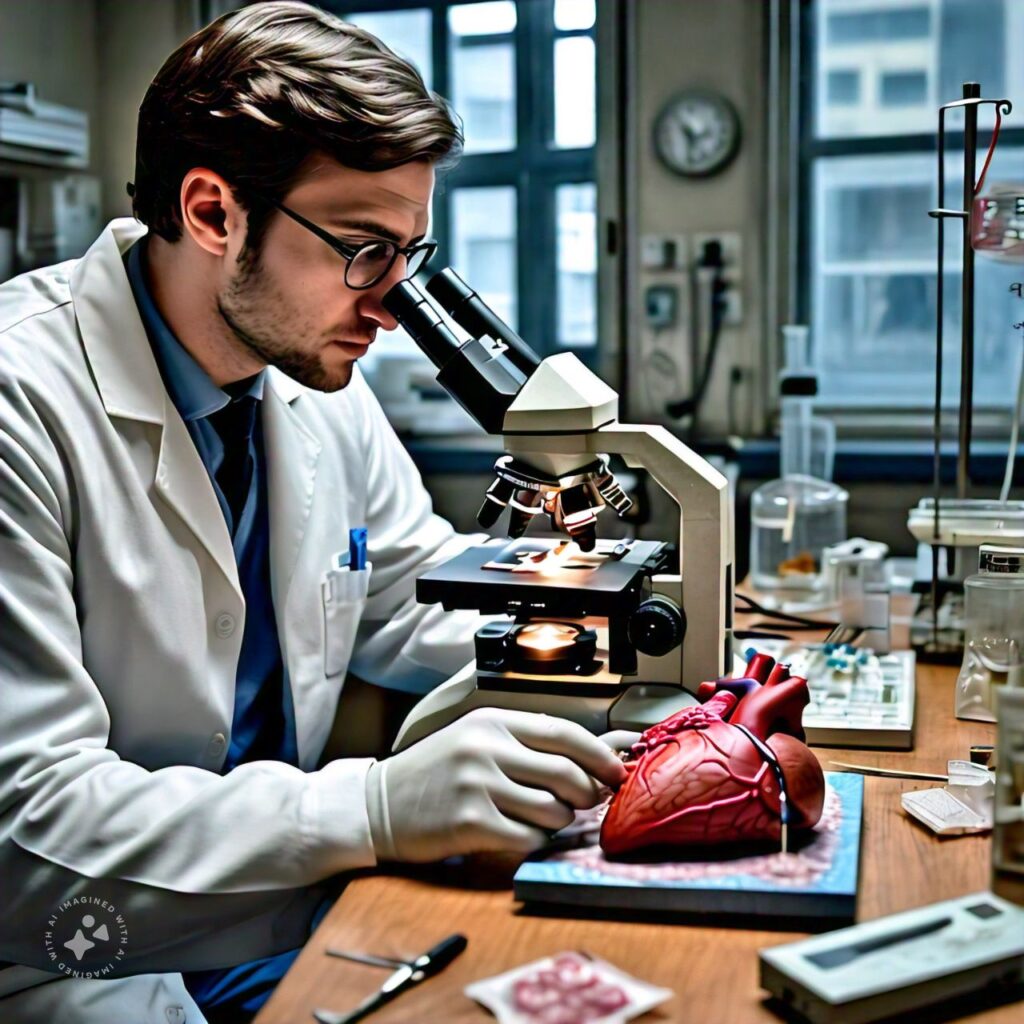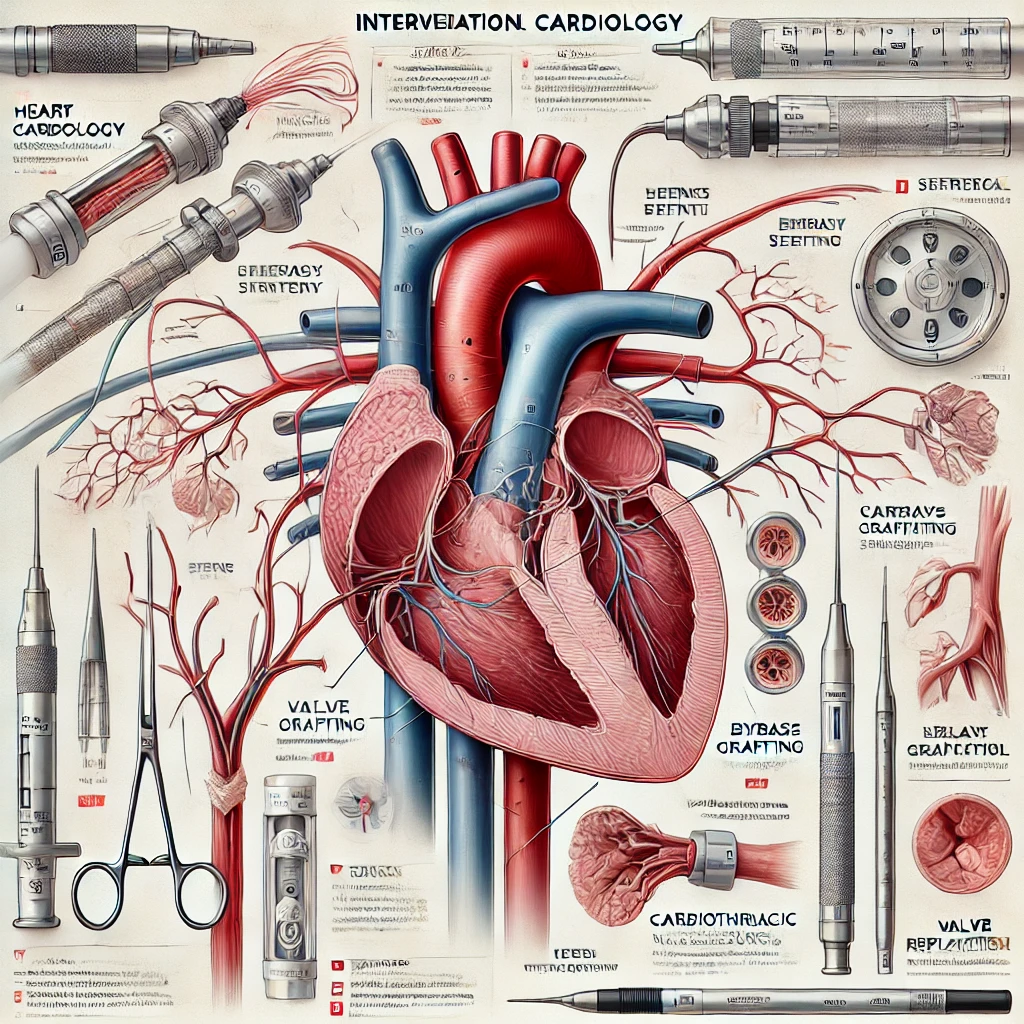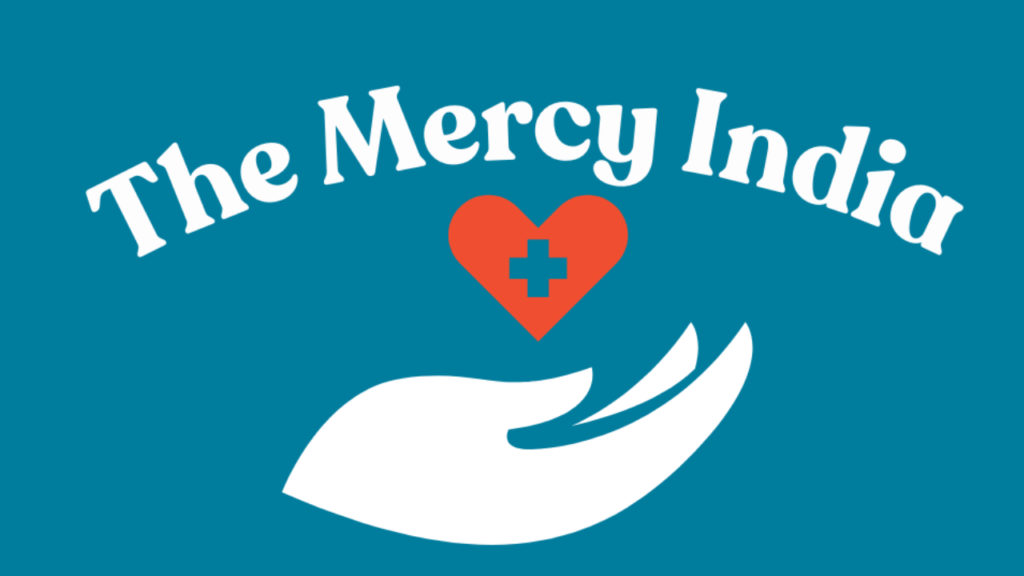

Interventional Cardiology & Cardiothoracic and Vascular Surgery (CTVS)
Outline
- Introduction
- Definition of Interventional Cardiology and CTVS
- Importance in modern medicine
- What is Interventional Cardiology?
- Overview of interventional cardiology
- Common procedures in interventional cardiology
- Common Procedures in Interventional Cardiology
- Coronary angioplasty
- Stent placement
- Atherectomy
- Benefits of Interventional Cardiology
- Minimally invasive nature
- Faster recovery times
- Reduced hospital stays
- Understanding Cardiothoracic and Vascular Surgery (CTVS)
- Overview of CTVS
- Key procedures in CTVS
- Key Procedures in CTVS
- Heart transplant
- Coronary artery bypass grafting (CABG)
- Valve replacement surgery
- Difference Between Interventional Cardiology and CTVS
- Procedure approach (minimally invasive vs. surgical)
- Patient recovery and hospital stay
- Conditions Treated by Interventional Cardiology
- Coronary artery disease
- Angina
- Heart attack
- Conditions Treated by CTVS
- Heart failure
- Severe valve disease
- Complex congenital heart defects
- Role of Technology in Advancements in Both Fields
- Innovations in imaging and stent materials
- Robotics in surgery
- Risks and Challenges in Interventional Cardiology
- Potential complications and how they are managed
- Risks and Challenges in CTVS
- Potential surgical complications
- Recovery challenges
- Preparing for Interventional Cardiology and CTVS Procedures
- Pre-procedure assessments
- Patient education and support
- Post-Procedure Care and Recovery
- Recovery times
- Rehabilitation processes
- Conclusion
- The importance of Interventional Cardiology and CTVS in treating cardiovascular conditions
Interventional Cardiology & Cardiothoracic and Vascular Surgery (CTVS)
Introduction
Interventional Cardiology and Cardiothoracic and Vascular Surgery (CTVS) represent two of the most critical fields in cardiovascular medicine. These fields focus on diagnosing, managing, and treating heart and vascular diseases, saving countless lives each year. While interventional cardiology is primarily concerned with minimally invasive procedures, CTVS handles complex surgical interventions, including heart and lung transplants.
What is Interventional Cardiology?
Interventional cardiology focuses on minimally invasive procedures to diagnose and treat cardiovascular diseases. Using catheter-based techniques, interventional cardiologists can treat various heart conditions without the need for traditional open-heart surgery.
Common Procedures in Interventional Cardiology
- Coronary Angioplasty: This procedure widens narrowed or blocked coronary arteries.
- Stent Placement: Stents are small, expandable tubes placed in narrowed arteries to improve blood flow.
- Atherectomy: Atherectomy removes plaque from arteries, helping improve circulation and prevent heart attacks.
Benefits of Interventional Cardiology
The minimally invasive nature of interventional cardiology procedures leads to several patient benefits, including shorter hospital stays, reduced recovery times, and lower risks of complications.
Understanding Cardiothoracic and Vascular Surgery (CTVS)
CTVS includes surgical procedures involving the heart, lungs, and vascular system. It includes complex surgeries, such as heart transplants and bypass surgeries, that require advanced techniques and highly skilled surgeons.
Key Procedures in CTVS
- Heart Transplant: Replacing a diseased heart with a healthy one from a donor.
- Coronary Artery Bypass Grafting (CABG): Bypassing blocked coronary arteries to restore blood flow to the heart.
- Valve Replacement Surgery: Replacing damaged heart valves to ensure proper blood flow.
Difference Between Interventional Cardiology and CTVS
Interventional cardiology focuses on catheter-based, minimally invasive procedures, while CTVS involves traditional, often open surgical approaches. Each has its role, benefits, and appropriate applications.
Conditions Treated by Interventional Cardiology
- Coronary Artery Disease: Treats blocked or narrowed arteries.
- Angina: Provides relief by improving blood flow.
- Heart Attack: Re-establishes blood flow to the heart, reducing damage.
Conditions Treated by CTVS
- Heart Failure: Offers surgical options like transplants for severe cases.
- Severe Valve Disease: Replaces or repairs damaged valves.
- Complex Congenital Heart Defects: Corrects structural issues in the heart.
Role of Technology in Advancements in Both Fields
Recent advances in imaging, stent materials, and robotics have improved precision in interventional cardiology and CTVS, enhancing patient outcomes and expanding the scope of treatable conditions.
Risks and Challenges in Interventional Cardiology
Potential complications include bleeding, infection, and reactions to anesthesia. However, these are typically managed with rigorous protocols and advanced monitoring.
Risks and Challenges in CTVS
CTVS procedures carry risks like infection, bleeding, and longer recovery times. Post-surgical care and patient monitoring are critical to manage these risks effectively.
Preparing for Interventional Cardiology and CTVS Procedures
Preparing for these procedures involves thorough assessments, patient education, and coordination with healthcare providers to ensure optimal outcomes.
Post-Procedure Care and Recovery
Recovery times vary, but both fields emphasize rehabilitation and follow-up care to maximize patient recovery and quality of life.
Conclusion
Interventional Cardiology and CTVS play pivotal roles in treating cardiovascular diseases, offering solutions that range from minimally invasive procedures to life-saving surgeries. As technology advances, both fields continue to evolve, providing hope for patients worldwide.
FAQs
What is the recovery time after interventional cardiology procedures?
- Recovery typically takes a few days, with many patients resuming normal activities within a week.
Are heart transplants common in CTVS?
- Heart transplants are highly specialized and are performed in cases of severe heart failure when other treatments are ineffective.
Is interventional cardiology safe for elderly patients?
- Yes, many elderly patients benefit from these minimally invasive procedures with reduced recovery times and lower risks.
Can I drive after an interventional cardiology procedure?
- Most patients can resume driving a few days after the procedure, but it’s best to consult your doctor.
How does technology impact these fields?
- Innovations like robotic surgery and advanced imaging techniques have enhanced precision and safety in both interventional cardiology and CTVS.
